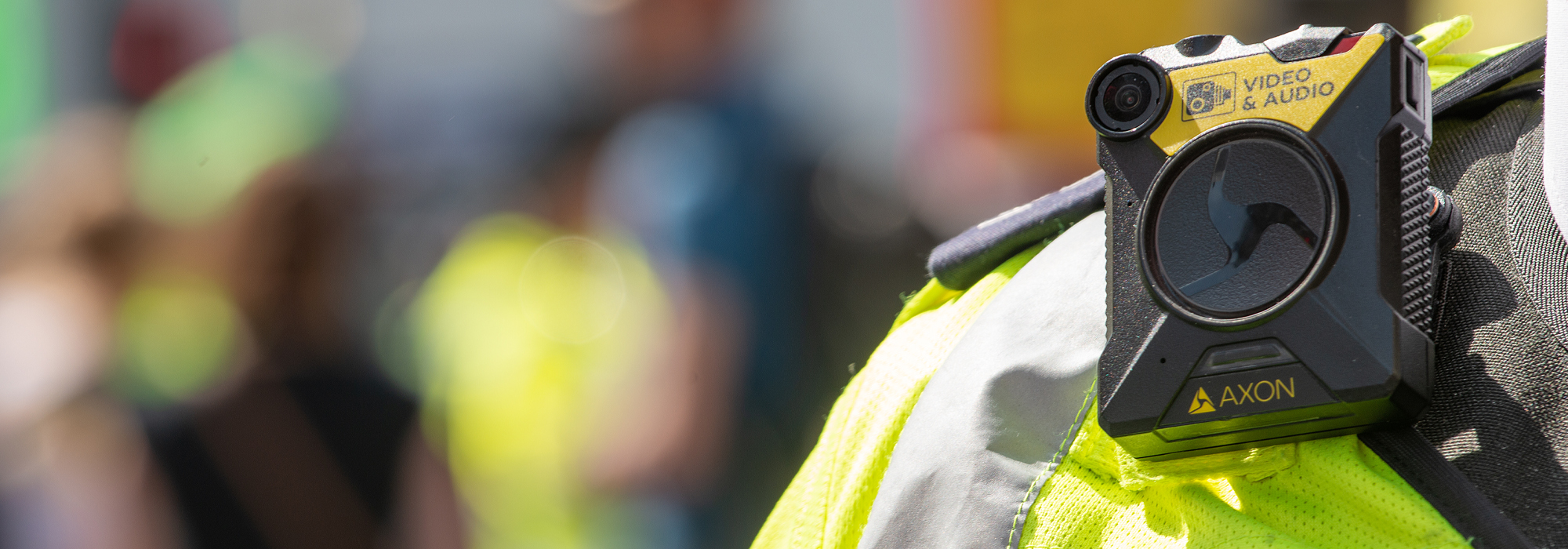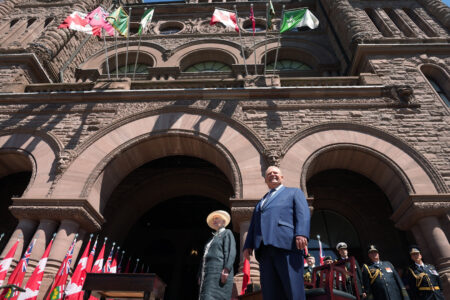
The police shooting deaths of Indigenous community members Chantel Moore on June 4 and Rodney Levi on June 14 in New Brunswick have reignited the debate over whether to outfit police across Canada with body-worn cameras (BWCs). Just six days after Rodney Levi was killed, police in Mississauga, Ontario, shot and killed Pakistani-Canadian Ejaz Choudry. The week before Moore’s death, Regis Korchinski-Paquet, an Afro-Indigenous woman, died when she fell from her 24th-floor balcony during an encounter with police in Toronto. Police officers in Toronto, like most law enforcement officers in Canada, do not wear BWCs, but the devices could be adopted in Canada’s largest city by the end of the summer.
These cases along with numerous others are enmeshed in the wider global movement to eradicate systemic racism in policing, galvanized by the murder of George Floyd in Minneapolis. One proposed solution is the widespread adoption of body-worn cameras. Federal, provincial and municipal politicians, government officials, community members, police personnel, and advocacy groups across Canada have advocated for the implementation of BWCs.
Only a handful of police services in Canada use the technology; the Calgary Police Service is the largest among them, with all of its 1,150 front-line officers equipped with body cameras. Other Canadian police services in Fredericton and Medicine Hat have adopted the technology but only a very small number of their officers actually wear the cameras because of fiscal constraints, which limits the number of BWC devices available for use.
One of the biggest concerns about the widespread adoption of BWCs is the lack of research in a Canadian context. Several large police agencies have tested the technology in Canada but there has yet to be an experimental study testing the efficacy of this technology on police use of force and complaints against officers. Further, the findings of numerous peer-reviewed studies in the US, the UK, and Australia pertaining to efficacy are inconclusive. In the absence of additional research, Canadian law enforcement agencies are taking an unsubstantiated approach to adopting this technology.
Despite the lack of scientific evidence of the efficacy of BWCs in Canada, there are a select few examples that can help us understand some of the key issues. In Calgary, police began testing BWCs in 2012 and, by 2019, had outfitted all its front-line officers.
The Calgary police have since made few public comments about their BWCs other than to assert that their use has resulted in several benefits. For instance, last month, the head of Calgary’s BWC program claimed that the cameras de-escalate incidents, and enhance transparency and accountability, which builds public trust in police.
Two incidents in October 2019 contradict these claims.
The first incident came to light after a cell phone video surfaced from an encounter that saw two male officers forcefully arresting a 51-year old white woman in her home who had called police to investigate a stolen vehicle. The officers held her down while she cried out “I can’t breathe.”
The second incident involved a 67-year old Indigenous man, Herbert Daniels, who was stopped by Calgary police for a license plate issue. What started as a traffic stop ended with his forceful arrest and a criminal charge of resisting arrest. No traffic citation – a non-criminal charge – was issued.
Officers were wearing BWCs in both incidents, yet the public is learning of these cases now only because both community members have made formal complaints and contacted the media.
In the first incident, no BWC footage has been released, and the police service has no plans to release the video publicly, citing policy, legal and privacy reasons.
In the second incident, the public is privy to the BWC footage only because Daniels retrieved the footage through an access to information request and provided it to the media.
Calgary police are only now internally investigating the incidents. These cases challenge claims that body cameras de-escalate incidents, enhance transparency and accountability, and build public trust. Calgary police, like most other police services in Canada that use body cameras, don’t make their BWC policy available to the public. (Fredericton’s BWC policy is publicly available but not easily accessible on its website).
It is difficult to fathom how body cameras improve transparency and accountability when the public is not privy to the policies and guidelines that govern BWC use. The Leadership Conference on Civil and Human Rights – a coalition of hundreds of national organizations in the US that work to promote human rights – has asserted that accountability is not a given with BWCs, and whether the devices make police accountable depends wholly on the policies put in place.
Failing to make policies accessible hinders robust public debate about how body cameras should be used while undermining transparency and accountability.
The Leadership Conference analyzed BWC policies for 75 major law enforcement agencies in the US and created a scorecard to evaluate the strength of the policies based on several factors. A concerning finding is that one-third of police services do not make their BWC policies available to the public. Failing to make policies accessible hinders robust public debate about how body cameras should be used while undermining transparency and accountability. It is critical that law enforcement make BWC policies freely accessible and open to the public
Given that the continued adoption of BWCs is likely, we propose seven policy recommendations to ensure BWCs are effectively delivered to communities in Canada:
First, any law enforcement agency using body cameras must make the policy easily accessible on its website. This is the most obvious step towards increasing transparency and ensures that police are accountable to their citizens.
Second, clear guidelines must be in place to outline important issues, such as when officers can activate/deactivate their body camera, the establishment and oversight of citizen and officer privacy safeguards, rules regarding when (or if) an officer can review footage, clear and transparent procedures regarding the storage and retention of footage (whether by a third party or police), footage destruction, access and release, and biometric use (facial recognition, for example). Each component should have a dedicated section in any BWC policy where it is comprehensively detailed to avoid any uncertainty or ambiguity over camera use and the management of footage produced by cameras.
Third, disciplinary mechanisms must be clearly established. If officers violate any section of the policy, they must be held accountable.
Fourth, police officials must communicate any changes in policy and detail how changes may impact the community. Police should also release an annual report on BWC use within their jurisdiction. This report should disclose the costs of the program and efficacy of the technology (including changes in use of force, complaints against officers, guilty pleas, court use, time efficiencies, and the like).
Fifth, each police service should be overseen by an independent local oversight authority that has the unrestricted ability to review all BWC footage, especially video that captures use of force and citizen arrests, to ensure all cases are properly investigated.
Sixth, BWC footage involving behaviour that is the subject of a citizen complaint should be disclosed to legal counsel immediately upon request.
Lastly, police services must include the community alongside all stakeholders in the creation, development, and ongoing changes to BWC policies. Town hall-style meetings should be used to solicit public input regarding decisions about existing policy and any proposed changes to it.
These seven policy recommendations serve as a baseline approach and are certainly not exhaustive.
Police body cameras will not, of course, solve the systemic racism that exists within policing institutions. But if police services are eager to adopt the technology as a way to rebuild and establish community trust, a robust BWC policy will help to ensure accountability and transparency. In the absence of policy safeguards, this technology could become an instrument of further abuse rather than a tool to improve community-police relations and accountability.
Photo: A body-worn camera in London, UK. A similar model is used by Calgary police. Shutterstock.com, by John Gomez











